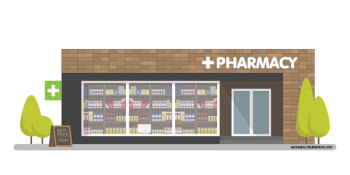
The top technologies for 2020 aren’t new, but they are on the cusp of moving into broader use in healthcare.

The top technologies for 2020 aren’t new, but they are on the cusp of moving into broader use in healthcare.

Ranks have swelled between 2010 and 2017 partly because of access to online learning.

The first FDA-approved product for NASH on the horizon.

Global market for peanut allergy treatments estimate at $4.5 billion.

A new class of drugs for high cholesterol and a novel peanut allergy treatment lead expected approvals.

How pharmacies should adopt value- and performance-based payment models and offer DIR fee reductions for pharmacists’ and their patients’ benefit.

A new class of drugs for high cholesterol and a novel peanut allergy treatment lead expected approvals.

Although commenting on the Proposed Rule is closed, if finalized, the Proposed Rule would have a significant impact on the way hospitals and physicians structure future compensation arrangements.

In first year of operation, CareMount ACO physicians reduced costs while improving care.


New plan from CVS Caremark eliminates member cost as a barrier to medications without raising costs for benefits, premiums or deductibles.

Patients' use of referrals has declined by 44% in the past year, and they now use an average of three different online sources to find a doctor, according to Doctor.com's annual consumer survey report.

Script.AI, healthcare IT solution, is bringing transparency to the prescription drug market and finding 46% savings opportunities for payers.

Cleveland Clinic and GYANT partner to digitally transform the post-discharge process through engagement which helps patients stay in touch with their providers and offering a more efficient patient and caregiver experience.

Novel cancer drug snags FDA approval.

Traditional party drug known as ecstasy is undergoing clinical trials to assist in PTSD treatment.

Some of the biggest trends this year that will affect the healthcare workforce.

Crowding of the emergency department can often affect health outcomes for patients and even contribute to patient readmissions, creating a vicious cycle for an already troubling crowding problem.

Michael J. McGuinness and Aarthi Belani share how convergence transactions pose challenges such as distinct regulatory regimes, potentially incompatible corporate cultures, and differing expectations for executive compensation, while working out these alliances.

Of the $350 billion widely cited as the cost of administrative complexity, $40.6 billion is spent on eight business transactions.

The rule requires providers to disclose any affiliations they have had with a current or former Medicare provider that has been in an act identified as a risk of fraud, waste, or abuse.

Scientific Founder of Akelos Inc., Peter Goldstein, was recently awarded the two-year grant from the National Institutes of Health to develop a non-opioid alternative meant to improve treatments for chronic pain, curb the rates of opioid use disorder and overdose, and achieve long-term recovery from opioid addiction.

Data shows certain vascular diseases not only develop earlier but progress quickly, which can set women up for late-life heart problems that tend to present differently, not simply later than those in men.

Nine in 10 believe in-home visits would provide the same or better quality of care.

Innovaccer uncovers insights from more than 3,000 healthcare executives to devise future strategies that providers need to succeed in the value-based care ecosystem.

Lamotrigine was contaminated with a heart drug.

Ozempic’s approval follows Jardiance’s expanded heart indication last July.

Healthy.io launches digital wound management solution offering new options for millions suffering from chronic wounds.

Breakthrough treatments for lung cancer and melanoma have driven down cancer deaths, seeing the largest ever decline from 2016 to 2017.

Research appearing in the ninth annual health information technology issue of The American Journal of Managed Care shows health systems can predict which patients will use the most healthcare just by collecting their age, gender, race, and address.